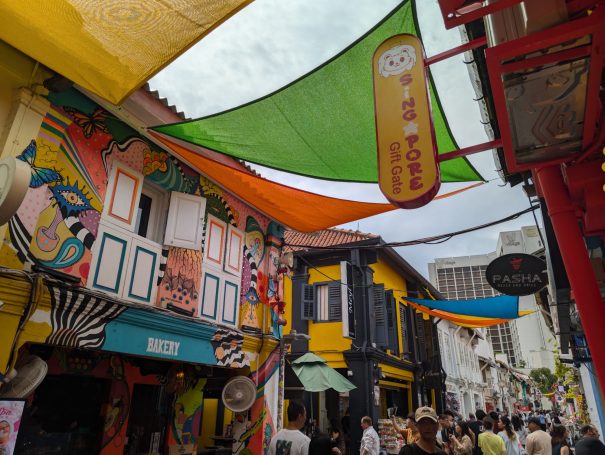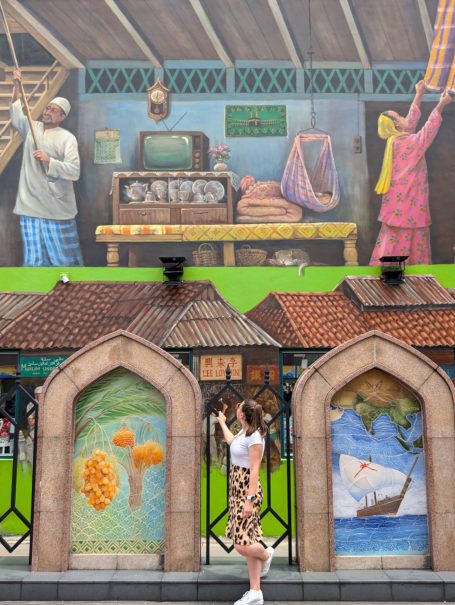travel tips: little india & haji lane, singapore
Immerse yourself in the captivating blend of tradition and trend in Singapore! Our guide invites you to explore two of the city's most vibrant and culturally rich neighbourhoods: Little India and Haji Lane. From the aromatic spices and colourful temples of Little India to the bohemian street art and indie boutiques of Haji Lane, prepare for an unforgettable sensory journey. These dynamic districts offer a fascinating glimpse into Singapore's diverse heritage and contemporary flair, perfect for any traveler seeking authentic experiences.
LITTLE INDIA, SINGAPORE
history of little india
Little India's origins date back to the early 19th century. While initially a general area of settlement, it gradually became a hub for the Indian community. The district's development was influenced by activities like cattle trading, brick kilns, and lime quarrying, which attracted Indian migrant workers. Serangoon Road, one of Singapore's earliest roads, became its main artery. Over time, as many Indians moved to public housing, Little India transformed from a residential enclave into a vibrant commercial and cultural center catering to the Indian community, officially gazetted as a conservation area in 1989. Today, it's known for its colorful shophouses, temples, markets (like Tekka Centre), and lively festivals, especially Deepavali.
BEST TIME TO VISIT
- Evenings: The early evening is generally recommended as the best time to visit. The heat is less intense, and the streets come alive with activity, lights, and the aroma of food.
- Festivals: For a truly immersive and vibrant experience, consider visiting during major Hindu festivals like Deepavali (Diwali) in late October/early November or Pongal in January. Be prepared for significantly larger crowds during these times.
- Mornings: For a quieter experience, especially when visiting temples and markets without the largest crowds, try going in the morning.
LITTLE INDIA MARKETS
- Tekka Centre: This is a must-visit. It houses a bustling hawker centre with authentic Indian food (biryani, dosa, butter chicken) and a wet market selling fresh produce, spices, and clothing. It's best experienced in the morning when the wet market is most active.
- Mustafa Centre: A unique, 24-hour department store that sells everything imaginable, from electronics and groceries to gold and textiles. It can be overwhelming but is an experience in itself. Weekday mornings/afternoons are less crowded.
- Little India Arcade: A charming collection of shophouses selling traditional Indian garments, jewellery, spices, henna, and souvenirs.
INDULGE IN LOCAL CUISINE
- Fish Head Curry: A Singaporean-Indian speciality.
- Dosa/Thosai: SavoUry crepes, often served with chutneys and sambar.
- Biryani: Fragrant rice dish with meat or vegetables.
- Indian Chai/Teh Tarik: The local "pulled tea."
- Many restaurants, like The Banana Leaf Apolo, offer authentic experiences.
OFF THE BEATEN TRACK
- Explore Beyond Serangoon Road: While Serangoon Road is the main artery, wander off into the side streets and alleys like Campbell Lane and Kerbau Road to discover colorful murals, unique shops, and other hidden gems like the House of Tan Teng Niah.
- Consider the Indian Heritage Centre: For a deeper understanding of the history and culture of the Indian community in Singapore, visit this modern museum.
HELPFUL CONSIDERATIONS
- Dress Modestly for Temples: When visiting any of the numerous temples (like Sri Veeramakaliamman Temple or Sri Srinivasa Perumal Temple), always dress respectfully. This means covering your shoulders and knees. You will also need to remove your shoes before entering the temple premises. Some temples might have specific restrictions on photography or flash, so look for signs.
- Prepare for Sensory Overload: Little India is a feast for the senses. Be ready for the vibrant colours of saris and murals, the aroma of spices and incense, the sounds of Bollywood music, and the bustling crowds. Embrace it as part of the authentic experience.
- Carry Small Denominations/Cash: While Singapore is generally modern, some smaller stalls, particularly in markets or older eateries, might prefer or only accept cash. It's also useful to have small change for public toilets (though not as common as in some other Asian countries).
- Stay Hydrated & Be Prepared for Humidity: Singapore is hot and humid year-round. Carry a water bottle, and consider a small fan or umbrella for shade from the sun and protection from sudden downpours.
transport options
MRT (MASS RAPID TRANSIT)
This is generally the most convenient and fastest way to reach Little India.
- The Little India MRT Station (NE7/DT12) is an interchange station served by both the North East Line (NEL) and the Downtown Line (DTL).
- You can easily connect from various parts of Singapore. [For example, from Clarke Quay, it's a 4-minute subway ride on the NEL].
- The station has multiple exits, with bus stops and taxi stands nearby.
BUS
Numerous bus routes pass through Little India.
- Key bus service numbers include 23, 48, 56, 57, 64, 65, 66, 67, 131, 139, 147, and 857.
- You can check specific routes using journey planner apps or the Singapore Bus Service website.
- Bus stops near Little India include "S'Goon Rd - Aft Farrer Pk Stn Exit G," "Rangoon Rd - Farrer Pk Stn Exit A," and "S'Goon Rd - Broadway Hotel."
TAXI/RIDING HAILING (GRAB)
- Taxis and ride-hailing services like Grab offer a comfortable and direct option, dropping you off directly in Little India.
- This can be more expensive than public transport.
- From Changi Airport, a taxi ride to Little India typically takes around 20 to 30 minutes, depending on traffic. Grab offers upfront pricing.
DRIVING
- Little India can be reached via main roads such as Serangoon Road, Bukit Timah Road, and Selegie Road.
- Be aware that parking can be challenging, especially during peak hours or festivals. Public parking is available, and nearby malls like Mustafa Centre or City Square Mall offer parking within walking distance.



